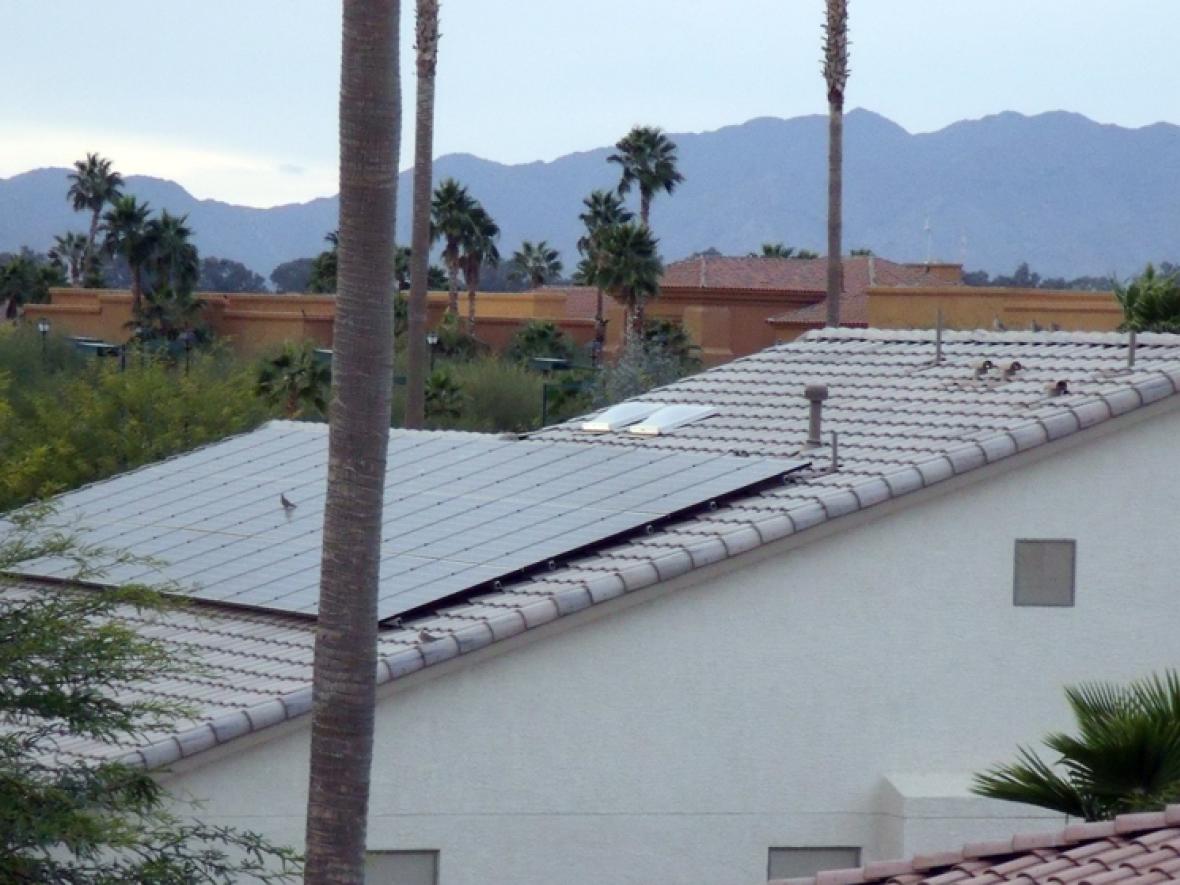
Are Enphase microinverters right for your solar system?
Talk to the experts at Energy Solution Providers!
If you’re thinking about installing residential or commercial solar panels and have been doing some research around them, you’ve probably come across the term “solar inverter” a few times.
A solar inverter is an integral component of any solar energy system. Without one, your solar panels wouldn’t be able to convert sunlight into electricity, and whether you have an off-grid or grid-tied solar system, you need an inverter. But how does a solar inverter work? And which type of solar inverter should you choose for your solar energy system?
Keep reading to learn everything you need to know about solar inverters from our team at Energy Solution Providers, Arizona’s leading solar company.
How Do Solar Inverters Work?
A solar inverter is a device that’s connected to your solar panels. Its job is to convert the direct current (DC) electricity that your solar panels generate into alternating current (AC) electricity, which is what household appliances and electronics run on. All of the electricity your solar panels generate needs to be run through a solar power inverter before it can be sent to your home or business. The electricity that’s stored in your home solar batteries must also go through an inverter before it can be used.
String inverters also contain software that allows them to interact with computer networks. The inverters collect data about your solar panel’s performance and allow you to monitor your system.
String Inverters vs Microinverters
There are a few different types of solar panel inverters. The most common are string inverters and microinverters.
String Inverters
In a string system, the solar panels are arranged into sets—called strings—and the strings are connected to a centralized inverter. String inverters have been used for decades, and they are one of the most cost-effective options when it comes to solar power inverters. But there are drawbacks to a string system. Namely, string inverters can only optimize power production at the string level. This means that if there is an issue with one singular panel—such as shading—power production is reduced throughout the entire system.
Microinverters
In a microinverter system, each PV panel has its own individual inverter, typically installed on the back of the panel. Microinverters convert electricity from each panel separately, so an issue with one solar panel will not affect the rest of the system. And conversely, an issue with one inverter will not stop power output from the whole system. Microinverters also allow you to monitor the power production of each individual panel, giving you better and more accurate insight into your solar system’s performance.
Enphase Inverters Maximize Energy Output!
Wondering what the best solar inverter is for your solar installation? Energy Solution Providers recommends Enphase inverters. Enphase microinverters were developed using industry-leading technologies and have been used in more than 1.4 million solar energy systems.
Enphase inverters perform better than other types of inverters, and they also offer advanced safety and flexibility. Because they maximize power output, Enphase microinverters allow you to generate more electricity with fewer solar panels. This can help you save money on your home solar installation and will leave you with plenty of space to expand your system if your energy needs grow in the future.
